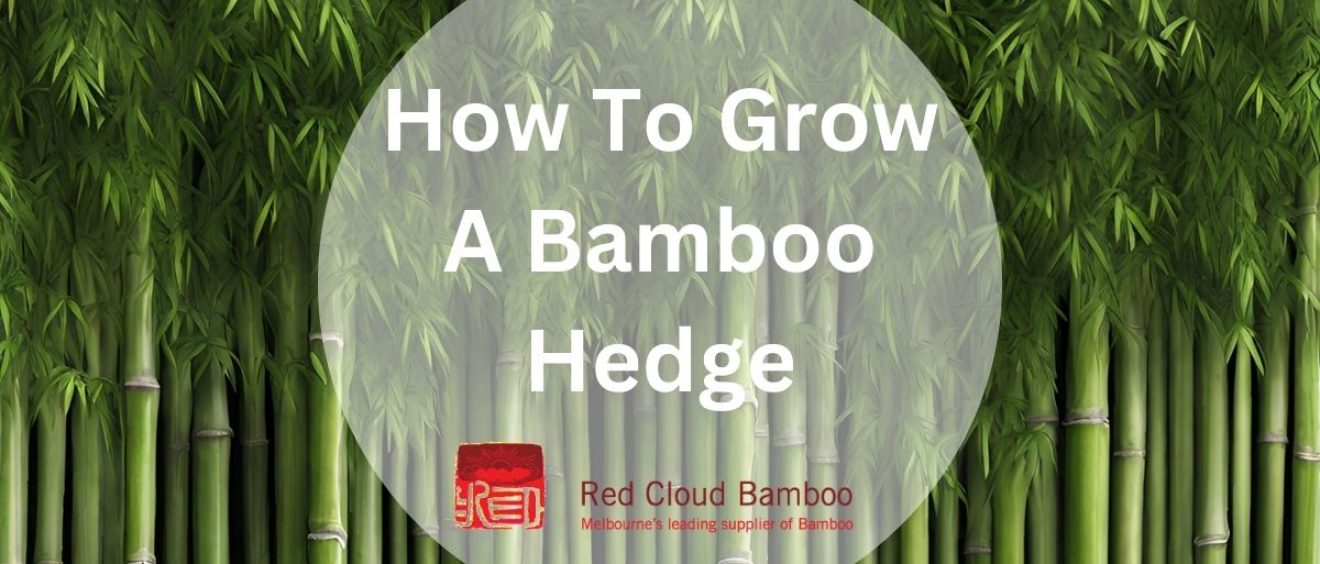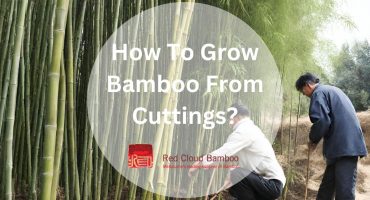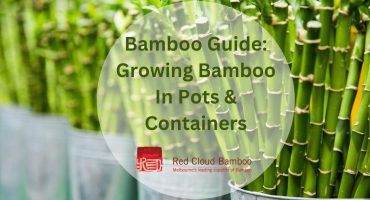
How To Grow A Bamboo Hedge
Bamboo hedging is an attractive and effective landscape option for modern gardens and properties. As a clumping grass, bamboo varieties such as Pleioblastus, Phyllostachys and Fargesia mature quickly to form dense foliage barriers ideal for privacy screening or as a bamboo hedge.
Their sturdy yet flexible canes withstand weather extremes while removing contaminants from the air. Beyond aesthetics and sustainability benefits, bamboo is relatively low maintenance once established.
This guide will outline how to successfully install and care for a bamboo hedge, referencing techniques from Red Cloud Bamboo. Key steps include site preparation, planting, fertilizing schedules and training the hedge shape—allowing homeowners to capitalise on bamboo’s rapid growth for an on-trend garden feature.
Preparing The Soil
When installing a bamboo hedge, carefully preparing the site is essential for success.
Begin by clearing the area of any existing weeds, plants or grass using organic weed killers. Then, thoroughly cultivate the soil to a depth of 20cm along the entire proposed hedge line—this is important for avoiding future challenges as the bamboo matures.
Tools like rotary tillers can efficiently prepare larger spaces, while hand tools are suitable for smaller gardens.
Finally, flatten and level the exposed soil using a rake to provide the bamboo with optimal conditions to thrive. Incorporating compost or soil improvers during this stage helps enrich the soil.
Laying Out Your Bamboo Hedge
Accurately marking out the placement of individual bamboo canes will contribute to a healthy, attractive hedge. Use timber stakes or string lines to delineate both the outline and even internal spacing of the future hedge.
For most bamboo varieties suited to hedging, around 60cm between canes is an effective denseness for screening. Tools like tape measures can assist with maintaining the spacing pattern for a uniform appearance.
Correctly oriented planting positions now saves future efforts in training the hedge direction and form. Taking time at this stage establishes a strong foundation for balanced and thriving bamboo growth as the hedge matures over subsequent seasons.
Planting Your Bamboo Hedge
Now the prepared site and layout is complete, it’s time to plant your bamboo canes to begin establishing the hedge.
Use a spade to dig holes along the outlined cane positions, making each hole deep and wide enough to accommodate the bamboo’s root ball without constriction. Plant the cane at a similar level it was previously growing, taking care not to set it too high or low in relation to the soil line.
Next, form a water retaining ‘bowl’ around each base by mounding up extra soil. This effective irrigation method helps bamboo get off to a strong start. Thoroughly watering each new planting twice following this process provides optimal moisture as the roots begin to establish the new hedge.
Establishing Your Bamboo Hedge
With the clumping bamboo canes now planted according to guidelines, regular care is needed to help them become fully established into an impenetrable hedge.
Key steps include frequent watering of new plantings, ensuring the soil does not dry out completely during initial establishment. As warmer weather arrives, reducing water frequency allows the canes to develop strong, deep root systems able to support future growth.
Adding a balanced, slow-release fertiliser in early spring and late summer boosts natural development. Ongoing liquid feeds fortified with seaweed extracts provide extra nourishment between scheduled applications.
Within their first 12 months, bamboo hedging varieties commonly reach heights over 1.5m if given optimal growing conditions. Patience and maintenance now will result in a handsome, sustainable privacy screen for the home landscape.
Maintaining Bamboo Hedge Shape
Once the initial planting year is complete, the bamboo hedge will have formed a lively screen. However, some effort may still be required to encourage proper form and direction. As new cane shoots emerge in the second season, guiding their placement with light staking helps fill in any sparse patches naturally over time.
Pruning lower sections may also be necessary to establish a tidy bottom edge. Throughout the hedge’s lifespan, occasional thinning of older canes allows additional shoots room to mature and strengthens overall structure.
Regular fertilization and trimming away excess foliage prevents legginess inside the hedge profile.
With routine care and training, bamboo’s natural strength and rate of spread will provide Australian gardeners with an attractive, low-maintenance living fence for many productive years.
Tools And Materials for Bamboo Hedging
Soil Preparation Tools
Thoroughly preparing the soilbed is simplified with the right equipment. Rotary tillers, spades, and rakes allow thorough cultivation and incorporation of amendments before planting begins.
Planting Aids
Acquiring quality bamboo canes from a local nursery supplies the hedge material. Marking out the spacing layout benefits from wooden stakes and string lines. A tape measure ensures accurate separation is achieved between cane placements. A trowel or dibble bar streamlines hole-digging.
Maintenance Supplies
Successful hedge establishment requires ongoing care. A watering can hydrates young plantings. Pruning shears shape emerging growth. All-purpose insecticidal soap aids insect control. Lightweight fertilizers promote continuous growth throughout the seasons. Mulch retains soil moisture around plant bases.
“Discover the incredible world of bamboo and unlock its limitless potential. Join us at Red Cloud Bamboo, your trusted partner in all things bamboo. Contact us today at 0418 552 170 to explore the possibilities. Or check out our blog for more information about bamboo. Let’s embrace the resilience and beauty of bamboo together!”




